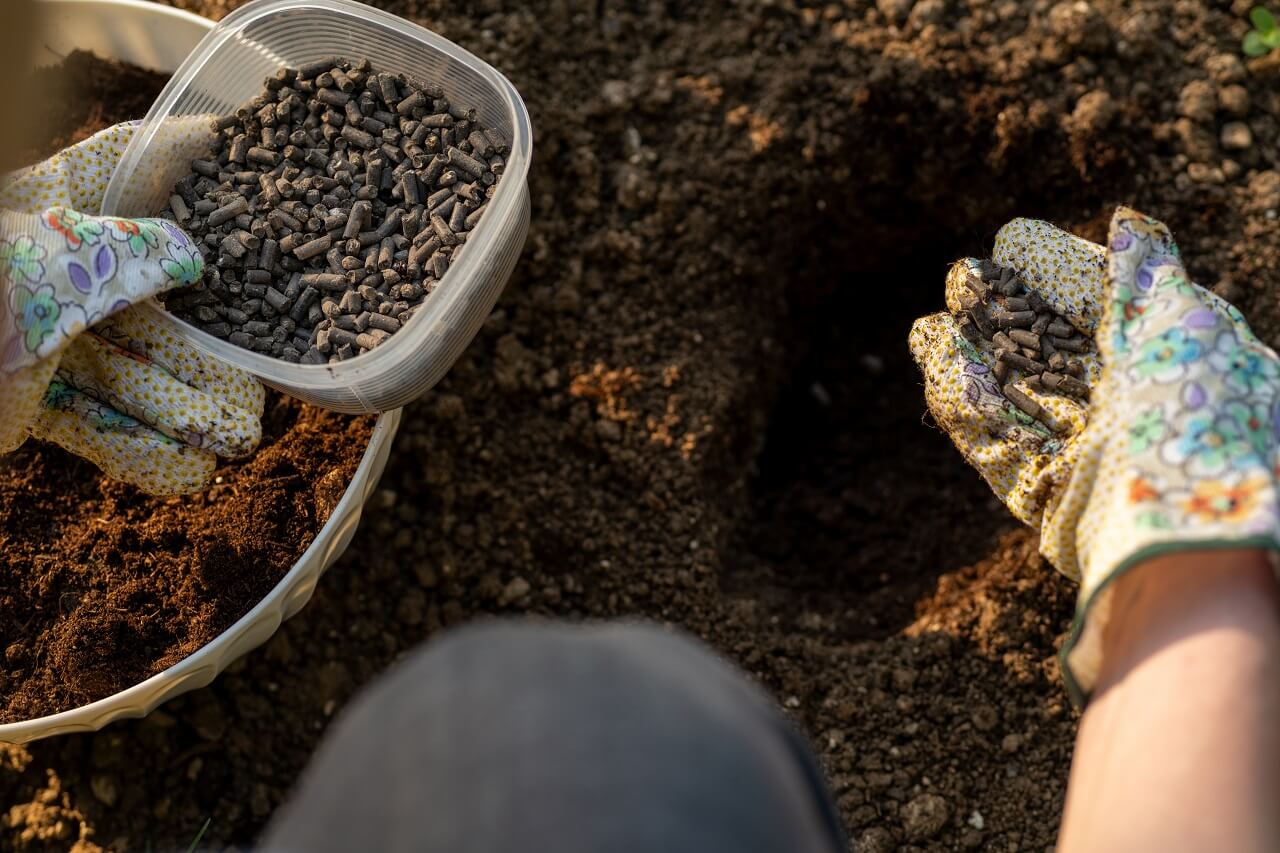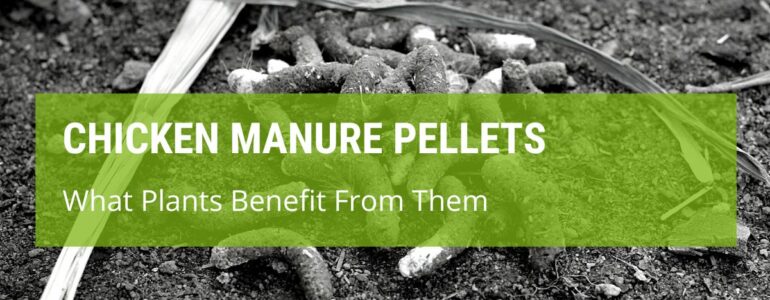Chicken manure is excellent for plants – it contains large amounts of nutrients that are essential for good, healthy plant development. However, not all plants have the same nutrient requirements, so some may benefit more than others. What plants benefit from chicken manure pellets? Let’s find out!
What Plants Benefit From Chicken Manure Pellets?

The vast majority of plants need a little extra helping hand in the form of fertiliser once in a while, and chicken manure is a great fertiliser.
However, plants’ nutrient needs are different, and some benefit more from chicken manure pellets than others:
- Blackcurrants
- Fruit trees
- Spinach
- Lettuce
- Tomatoes
- Arugula
These plants, and those that have strong leafy growth, will really benefit from some chicken manure pellets.
Bear in mind that chicken manure pellets are best for those plants that have strong leafy growth, while fruiting plants may not show such great results.
You should not spread the pellets in the holes where your plants are to go; having chicken manure pressed up against the root ball can damage the plants.
Sprinkle them even over the surface of plants that need a little extra boost of nutrients, and you can also top dress the soil around plants that are looking yellow and sickly.
Spreading chicken manure pellets over your garden beds, whatever you are growing in them, is a great thing to do at the very end or right at the beginning of the growing season.
Just make sure you allow enough time for the pellets to decompose into the soil, so that they don’t affect the roots of your baby plants.
If you want to know a little more about chicken manure pellets, have a look at this short video:
Are Chicken Manure Pellets Good For Tomatoes?
Chicken manure pellets offer a good amount of nitrogen to help your tomato plants, and it also contains smaller amounts of Phosphate and Potash as well, which is good for fruiting plants.
Your tomato plants will flourish in a bed that has been fertilised with chicken manure pellets, but you will need to take care with how you apply it.
For best results, dig the fertiliser into the soil at the beginning of the growing season, before you have planted your tomatoes.
Always ensure that you don’t put the pellets directly into the holes where you will place your tomato plants, as it can burn the young roots.
If you discover that your tomato yield is not as good as it has been before, it may be time to put the pellets down for a year.
The nitrogen is very good for leaf growth but too much of it can affect fruit growth, so you may wish to go for a biannual application of chicken manure pellets.
Are Chicken Manure Pellets Good For All Plants?
Adding too much chicken manure pellets, even to plants that benefit from them, can cause problems.
Chicken manure is very high in nitrogen, and as such it can be a problem for plants which don’t like too much of this.
You will also need to keep an eye on the plants that are producing fruit, as the pellets will encourage leaf growth but not necessarily fruiting bodies.
Adding excessive chicken manure and encouraging leaf growth can mean that you attract more unwanted insects which like to munch on leaves!
Stick to adding chicken manure pellets to your leafy plants – salads, flowers, and particularly nutrient hungry plants, for the best results.
Applying this fertiliser is best done at the earliest part of the growing season, so the soil has a chance to absorb it before the plants are planted.
How Often To Use Chicken Manure Pellets?
Fertilising, although we have been told that it is essential for plant growth, should actually not be done too often.
But surely too much fertiliser is better than too little, I hear you cry? Well actually, you may be wrong about this.
An excess of fertiliser can cause too much leaf growth, and in extreme cases it can burn the roots of a delicate plant.
You can have too much of a good thing, as it turns out! Chicken manure, in particular, can be quite hard for some plants to cope with.
Using chicken manure pellets is a wonderful thing for your garden, but overdoing it can be just as bad as not doing it at all.
Your best bet, when using any type of general fertiliser, is to do it before the beginning of the growing season, to allow the soil to soak up the nutrients.
I would scatter or dig in chicken manure pellets once a year, at the very end of winter or the very start of spring, for the best result.
Here’s a good article, telling you all about the benefits of chicken manure pellets.
What Plants Don’t Like Manure?
Although we may think that adding manure and fertilisers benefit all plants, this is not necessarily the case.
Some crops, like carrots for instance, actually like relatively poor soil – too many nutrients will cause the roots to try to find them in the soil, and can cause them to fork.
Parsnip are also a crop that don’t really like too much manure; for the same reason as carrots – it can turn them from long crops into many-forked ones.
Too much manure can encourage the growth of leaves, at the expense of fruits and vegetables, so it may be best avoided for the ones that need to produce crops.
Many of the Nightshade family – tomatoes, cucumbers, aubergines and peppers – don’t like to have too much manure.
They like the nutrients in the soil, but too much can encourage them to put too much effort into their leaf growth rather than their fruiting growth.
Final Words
So, there you have it – a comprehensive guide to the best plants to use your chicken manure pellets on, and which you should not use them on.
Armed with this knowledge, chances are your plants will grow like never before, and you will be the envy of everyone for miles around!




